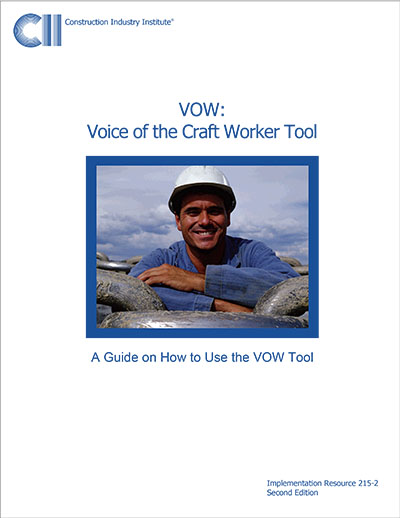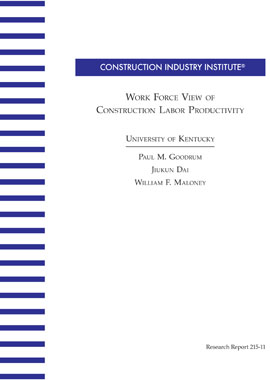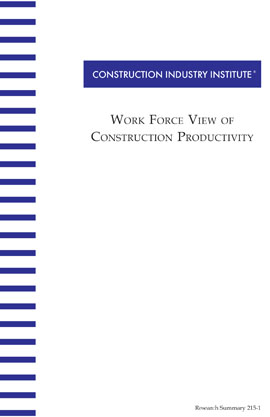
Member Exclusive
Worker's View of Construction Producivity and the VOW Tool
Event Date
Apr 01, 2007
Type
Workshop Presentation
Research Team
RT-215
Slides
40
Topic
Work Force View of Construction Productivity
DOCUMENT DETAILS
Abstract
Filters & Tags
Abstract
Filters & Tags
Knowledge Area
Project Phase
Project Function
Industry Group
Research Topic
Work Force View of Construction Productivity
Keywords
Voice of Workers,
Productivity Factors,
Productivity Matrix,
Craft Worker Survey,
Productivity,
rt215



